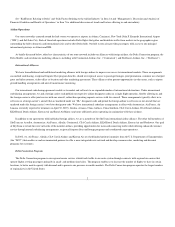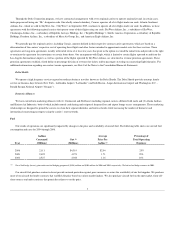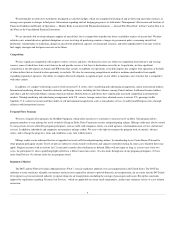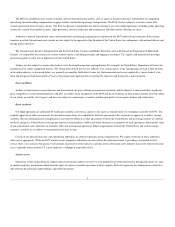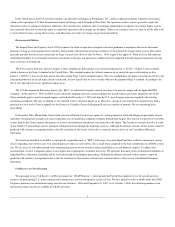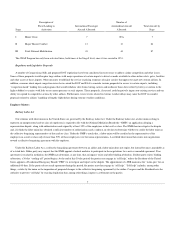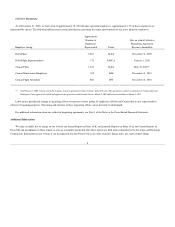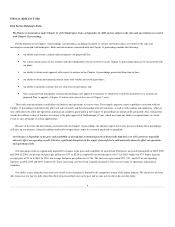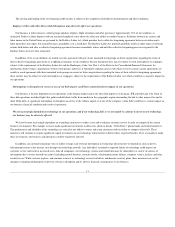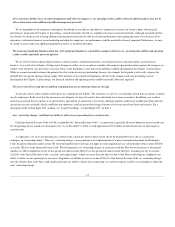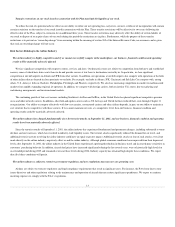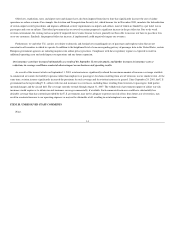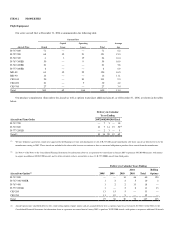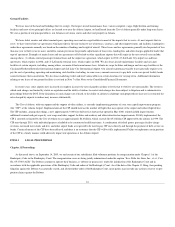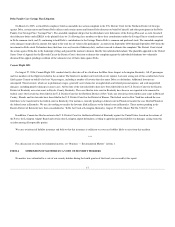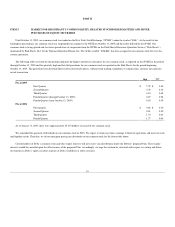Delta Airlines 2006 Annual Report Download - page 17
Download and view the complete annual report
Please find page 17 of the 2006 Delta Airlines annual report below. You can navigate through the pages in the report by either clicking on the pages listed below, or by using the keyword search tool below to find specific information within the annual report.
If we experience further losses of senior management and other key employees, our operating results could be adversely affected, and we may not be
able to attract and retain additional qualified management personnel.
We are dependent on the experience and industry knowledge of our officers and other key employees to execute our business plans. Our financial
performance, along with our Chapter 11 proceedings, created uncertainty that led to a significant increase in unwanted attrition. Although unwanted attrition
has slowed, we remain at risk of losing additional management talent critical to the successful transformation and ongoing operation of our business. If we
experience a substantial turnover in our leadership and other key employees, our performance could be materially adversely impacted. Furthermore, we may
be unable to attract and retain additional qualified executives as needed in the future.
We are facing significant litigation and if any such significant litigation is concluded in a manner adverse to us, our financial condition and operating
results could be materially adversely affected.
We are involved in legal proceedings relating to antitrust matters, employment practices, environmental issues and other matters concerning our
business. As a result of our Chapter 11 filing, most attempts to collect, secure or enforce remedies with respect to pre-petition claims against the company are
subject to the automatic stay provisions of section 362(a) of the Bankruptcy Code and certain liabilities could be discharged in the Chapter 11 proceedings.
While we cannot reasonably estimate the potential loss for certain of our legal proceedings because, for example, the litigation is in its early stages or the
plaintiff does not specify damages being sought, if the outcome of any significant litigation is adverse to the company and such proceedings are not
discharged in the Chapter 11 proceedings, our financial condition and operating results could be materially adversely impacted.
We are at risk of losses and adverse publicity stemming from any accident involving our aircraft.
An aircraft crash or other accident could expose us to significant tort liability. The insurance we carry to cover damages arising from any future accidents
may be inadequate. In the event that the insurance is not adequate, we may be forced to bear substantial losses from an accident. In addition, any accident
involving an aircraft that we operate or an aircraft that is operated by an airline that is one of our codeshare partners could create a public perception that our
aircraft are not safe or reliable, which could harm our reputation, result in air travelers being reluctant to fly on our aircraft and harm our business. For a
description of the Comair flight 5191 accident, see “Legal Proceedings - Comair Flight 5191” in Item 3.
Any “ownership change” could limit our ability to utilize our net operating losses carryforwards.
Under the Internal Revenue Code of 1986, as amended (the “Internal Revenue Code”), a corporation is generally allowed a deduction in any taxable year
for net operating losses carried over from prior years. As of December 31, 2006, we had approximately $7.8 billion of federal and state net operating loss
carryforwards.
A corporation’s use of its net operating loss carryforwards is generally limited under section 382 of the Internal Revenue Code if a corporation
undergoes an “ownership change.” When an “ownership change” occurs pursuant to the implementation of a plan of reorganization under the Bankruptcy
Code, the general limitation under section 382 of the Internal Revenue Code may not apply if certain requirements are satisfied under either section 382(l)(5)
or section 382(l)(6) of the Internal Revenue Code. We will experience an “ownership change” in connection with the Plan, but we have not yet determined
whether we will be eligible for or rely on the special rule under section 382(l)(5) or the special rule under section 382(l)(6). Assuming we rely on section
382(l)(5) of the Internal Revenue Code, a second “ownership change” within two years from the effective date of the Plan would eliminate completely our
ability to utilize our net operating loss carryovers. Regardless of whether we rely on section 382(l)(5) of the Internal Revenue Code, an “ownership change”
after the effective date of the Plan could significantly limit our ability to utilize our net operating loss carryforwards for taxable years including or following
such “ownership change.”
12


